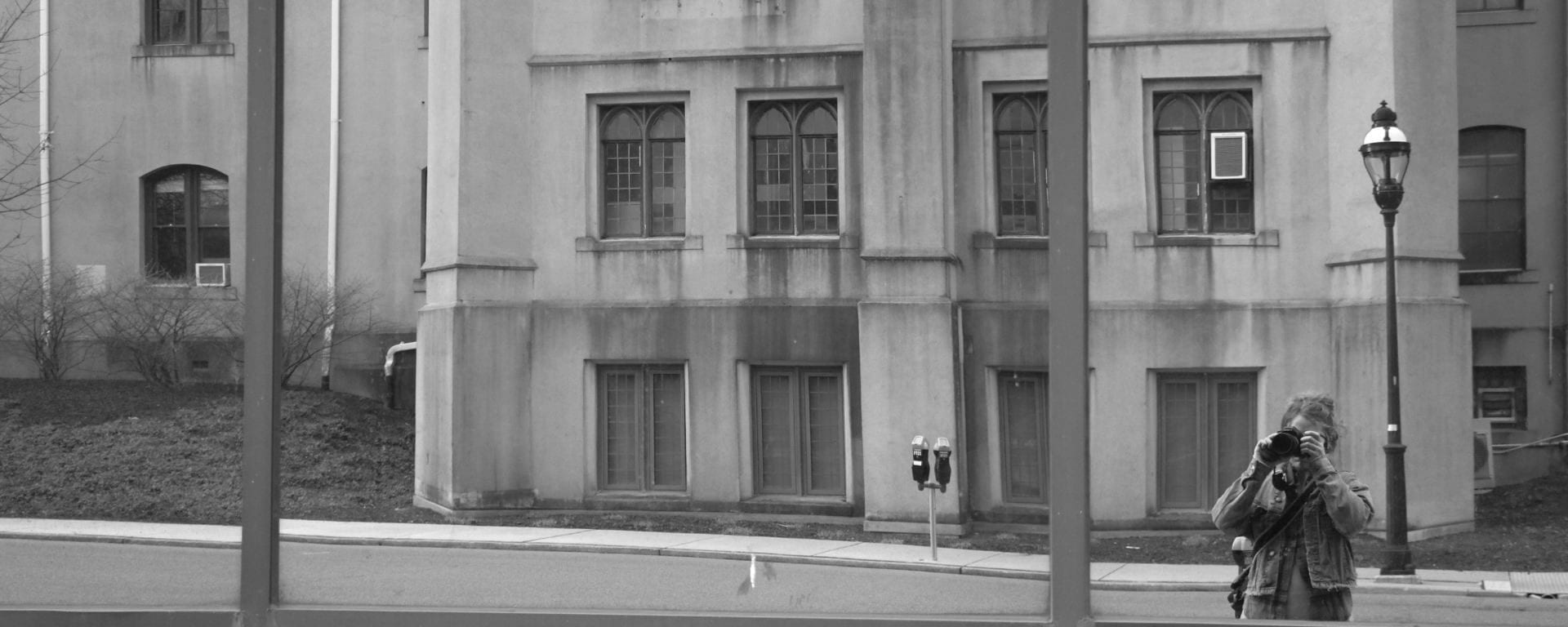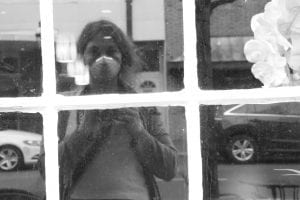When I was growing up, my grandmother made me an Easter dress every year. This year, she made me a mask, emerald green like the plastic grass she used in our baskets to bury chocolate bunnies and dyed eggs and Peeps.
Like everything she has made for me, the mask is very pretty. It is evenly stitched, its thread standing out slightly from the cloth because she 'eyeballs' to colormatch. It is hand wash only.
Until now, the masks I'd been using were leftover from when I'd moved into my South Bethlehem apartment, when I'd stocked up on medical masks and yellow rubber gloves and Goo Gone to scrub out the bathroom and kitchen. The new mask, though, was not disposable, was not some leftover miscellany. It was mine, made with my eyes and complexion in mind, to be kept.
Like my baby-blue hiking boots, the laces frayed, leather scuffed across the toe. Like the journal that I keep with me, filled with notes and ideas for what I'd someday like to write, its creased binding worn and soft. Like the metal yellow water bottle I dropped downcliff on a hike, so banged and misshapen that it teeters where it stands. Like any object that I've loved in advance because I knew it'd be used, increasing signs of use only making it more lovely. In his memoir, Mark Doty says these signs of use are an objects' being "in dialogue, a part of, implicated…refus[ing] perfection, or rather assert[ing] that this is perfection, this state of being consumed, used up, enjoyed, existing in time."
This mask was my Easter dress. It will be, like my boots and journal and water bottle, with me for some time. This is what happens with good tools. We love them first for their look and their imagined usefulness, and then we love them for their look's slow decay, for the scars and evidence of all we've done with them. And this is how we are learning to look during COVID-19. In emptied streets and closed shops, we're seeing potentialities that we don't always: that alleyway as a patio, this corner for a Little Free Library box. We're seeing, too, signs of wear in our neighborhoods that we don't usually attend to: footworn paths in the grass cutting corners between sidewalks, flowering black medic weeds along the greenway plucked clean of their blossoms by passersby. Indeed, walking around Bethlehem now that it's empty, it is difficult not to notice the possibilities for pleasure and for utility all around.
When this moment has passed, I hope to hang onto this way of looking, of seeing use and imagining possibility throughout our neighborhoods in times of calm. And the camera certainly helps, as Dorothea Lange writes, "A camera is a tool for learning how to see without a camera." Right now, I am learning how to see Bethlehem during COVID-19, so that I can see it better when COVID is over.
Robin Paige Lee writes poems, essays, and literary criticism. She holds a BA from the University of the South in Sewanee, Tennessee and is completing an MA in English Literature at Lehigh University. She lives in Bethlehem, Pennsylvania and teaches First Year Writing at Lehigh University.





You must be logged in to post a comment.